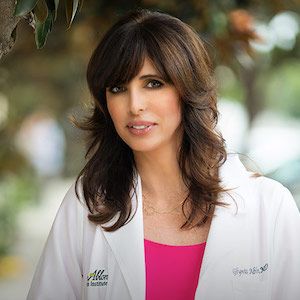Glynis Ablon, MD: Winter Clinical Presentation on ‘New Devices for Your Practice’
In a Q&A interview with Glynis Ablon, the dermatologist described highlights from her recent Winter Clinical presentation on new devices for clinical practice.
Glynis Ablon, MD

During a recent interview with HCPLive, Glynis Ablon, MD, answered a series of questions related to her recent 2023 Winter Clinical Dermatology Conference presentation entitled ‘New Devices for Your Practice.’
Ablon is the founder of the Ablon Skin Institute & Research Center, and she also works as an associate clinical professor at UCLA.
She first explored some of the major talking points described in her presentation, highlighting what clinicians should consider prior to adopting new devices to their practices.
“Technology seems to advance at the speed of light.”
“It's always exciting to evaluate new devices on the forefront of aesthetic dermatology,” she explained. “In my lecture, I like to remind other physicians that it is important to do your due diligence before buying new devices. I break it down into three sections calculating your risk, deciding which equipment you need, and finances. Once you're actually ready to bring in another device into your practice, it's always important to know what's out there and what's new.”
Ablon explained a bit more about the devices explored in her presentation, listing their companies and noting their uses and designs.
“I plan to quickly touch on six new devices, including the newest, fractional, cold ablative fiber laser from Acclaro, called UltraClear,” she said, adding that she went over “the only FDA-approved, low-level laser device to treat excess fat and obesity, from Erchonia called Emerald, (and) the synchronous parallel ultrasound beam technology now FDA-approved for cellulite from Sofwave.”
She explained the use of “fractional, radio, frequency, microneedling devices from EndyMed” as well as the “thermal-mechanical, fractional, titanium alloy tip for skin tightening—especially periorbital—and wrinkles by Sentis.”
Another device she explained that was designed for clinicians was a TransDermal Infusion device by Sensus that provided a needle-free delivery through the use of micro-electric currents.
“It's always important in dermatology to find devices that give less downtime, less discomfort, but equal efficacy. And that's what all of these devices do.”
Ablon also explained the reasons dermatologists might want to understand the ways these types of tools work.
“Because there's so many new devices out there, it's important to understand how the technologies work, which ones really do what they say, and how different they are than what has been available in the past,” she stated. “I always explain that it’s important to test these devices in your own practice and see that you can get the results you expect with minimal to no downtime and little discomfort in order to make them effective in your practice.”
Ablon added that she believes many of the new devices put on the market have unique properties, and that if they do not then they will not be successful for clinicians.
In the final portion of her interview, Ablon explained her views on telling companies about their devices’ uses and whether or not she is optimistic about the future of these tools.
“I'm a straight shooter,” she stated. “I talk about what I believe in. If I try something and I don't really like it or it doesn't do what the company says it will, I'll tell them ‘Have a nice day.’ But if I'm excited by the results I am seeing when I use a new device in my practice, I'm going to talk about it and share it with my colleagues.”